You are backing up raw InnoDB files by using mysqlbackup.
Which two groups of files will be backed up during a full backup? (Choose two.)
You want to log only the changes made to the database objects and data on the MySQL system.
Which log will do this by default?
Which four are types of information stored in the MySQL data dictionary? (Choose four.)
A MySQL server is monitored using MySQL Enterprise Monitor’s agentless installation.
Which three features are available with this installation method? (Choose three.)
Which two are true about differences between logical and physical upgrades of MySQL databases? (Choose two.)
Which two are characteristics of snapshot-based backups? (Choose two.)
Which statement is true about InnoDB persistent index statistics?
Examine this output:
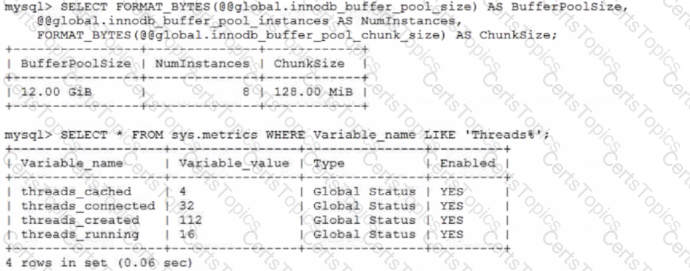
Which change should optimize the number of buffer pool instances for this workload?
You have configured MySQL Enterprise Monitor to monitor your MySQL server.
Which four features are available? (Choose four.)
Examine these statements, which execute successfully:
TRUNCATE test; BEGIN;
INSERT INTO test(id, name) VALUES(1, “Hello”); ROLLBACK;
SELECT id FROM test;
Which three storage engines would return a nonempty recordset for the test table when executing the statements? (Choose three.)
A user wants to connect without entering his or her username and password on the Linux command prompt.
Which three locations can be used to store the user’s mysql credentials to satisfy this requirement? (Choose three.)
Which three statements are true about MySQL replication? (Choose three.)
Which two methods allow a DBA to reset a user's password? (Choose two.)
Your MySQL server was upgraded from an earlier major version.
The sales database contains three tables, one of which is the transactions table, which has 4 million rows.
You are running low on disk space on the datadir partition and begin to investigate.
Examine these commands and output:
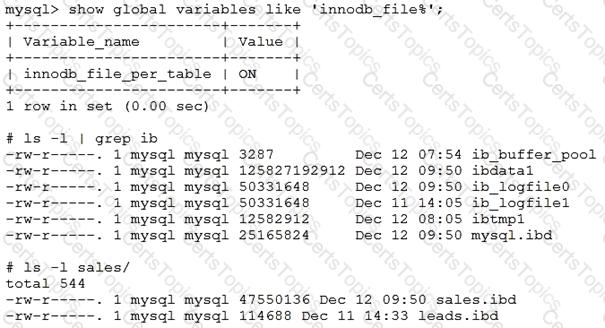
Which two statements are true? (Choose two.)
Four nodes are configured to use circular replication.
Examine these configuration parameters for each node:

Which statement is true?
You have semi-synchronous replication configured and working with one slave. rpl_semi_sync_master_timeout has never been reached.
You find that the disk system on the master has failed and as a result, the data on the master is completely unrecoverable.
Which two statements are true? (Choose two.)
A colleague complains about slow response time on your website.
Examine this query and output:
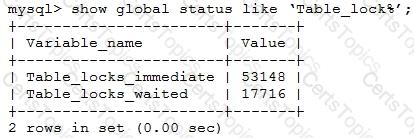
What is the most likely cause for the high number of lock waits?
The data in this instance is transient; no backup or replication will be required. It is currently under performing.
After profiling the system, you highlight these MySQL status and global variables:
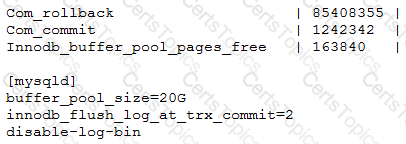
The OS metrics indicate that disk is a bottleneck. Other variables retain their default values.
Which three changes will provide the most benefit to the instance? (Choose three.)
You reconfigure and start a slave that was not replicating for several days.
The configuration file and CHANGE MASTER command are correct. Examine the GTID information from both master and slave:
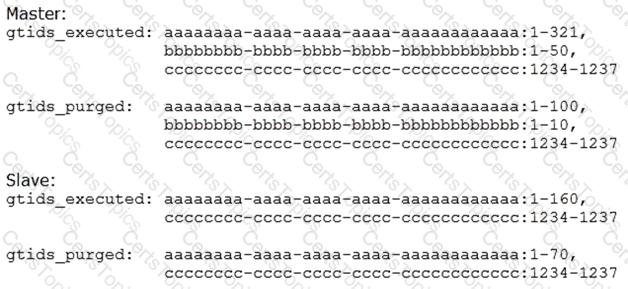
Which statement is true?
Which two statements are true about MySQL Installer? (Choose two.)
Which four connection methods can MySQL clients specify with the --protocol option when connecting to a MySQL server? (Choose four.)